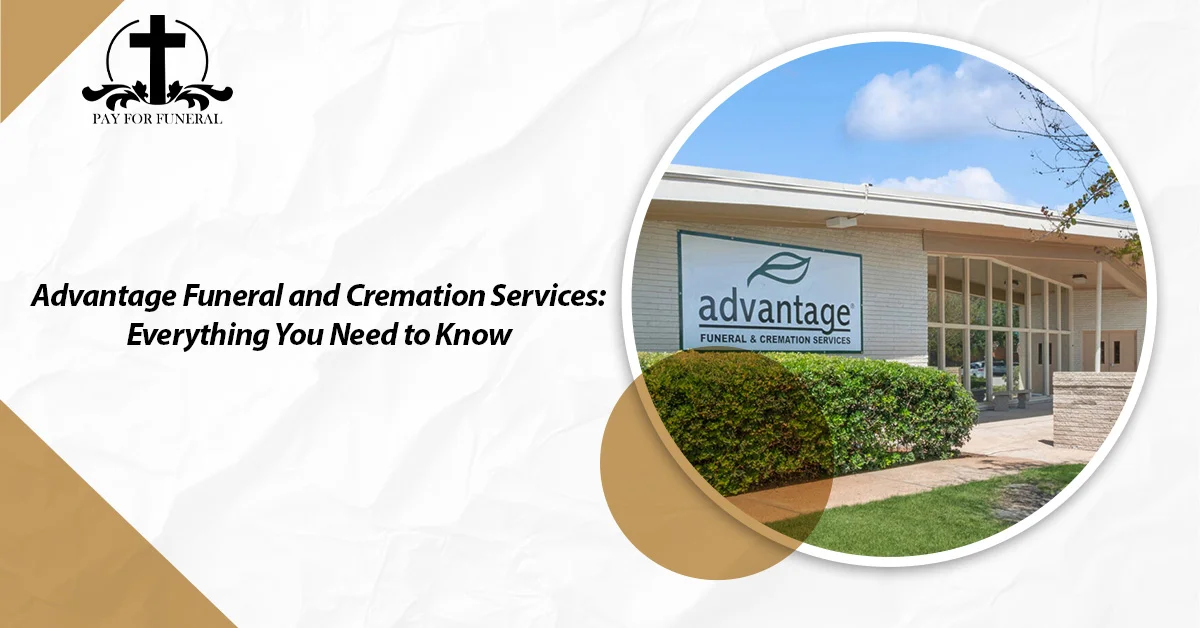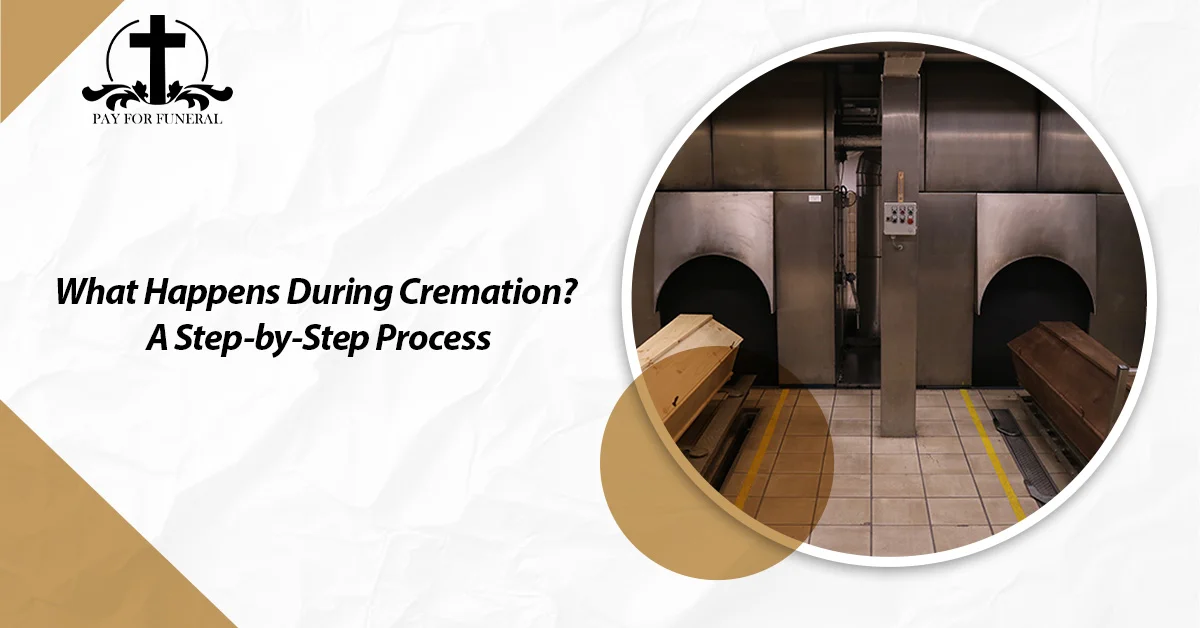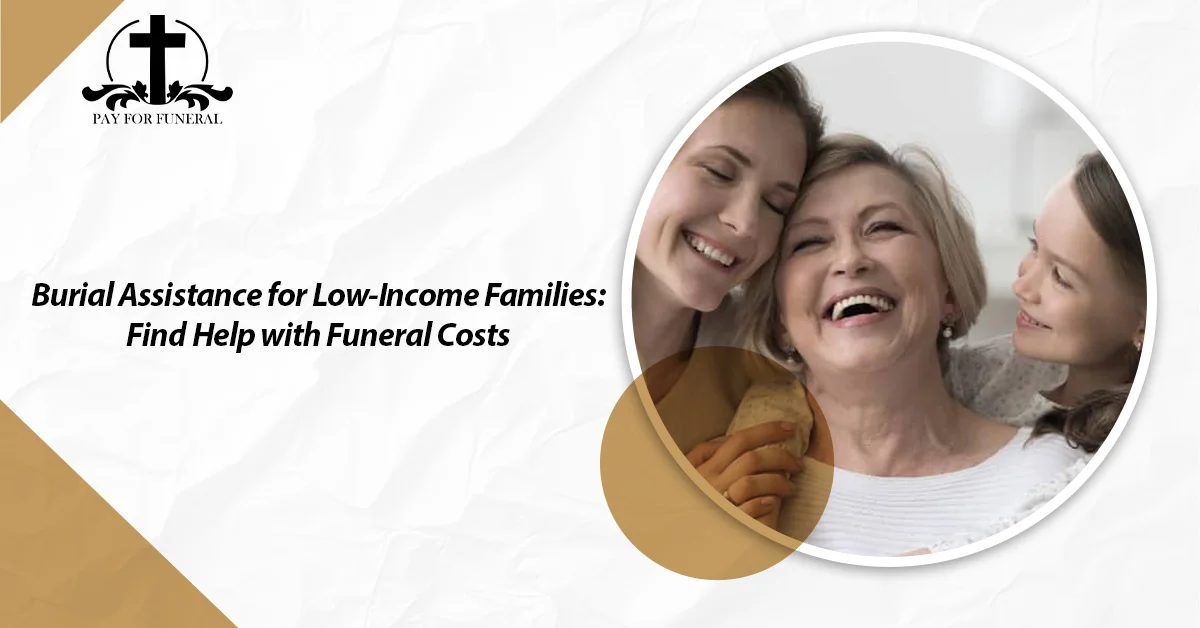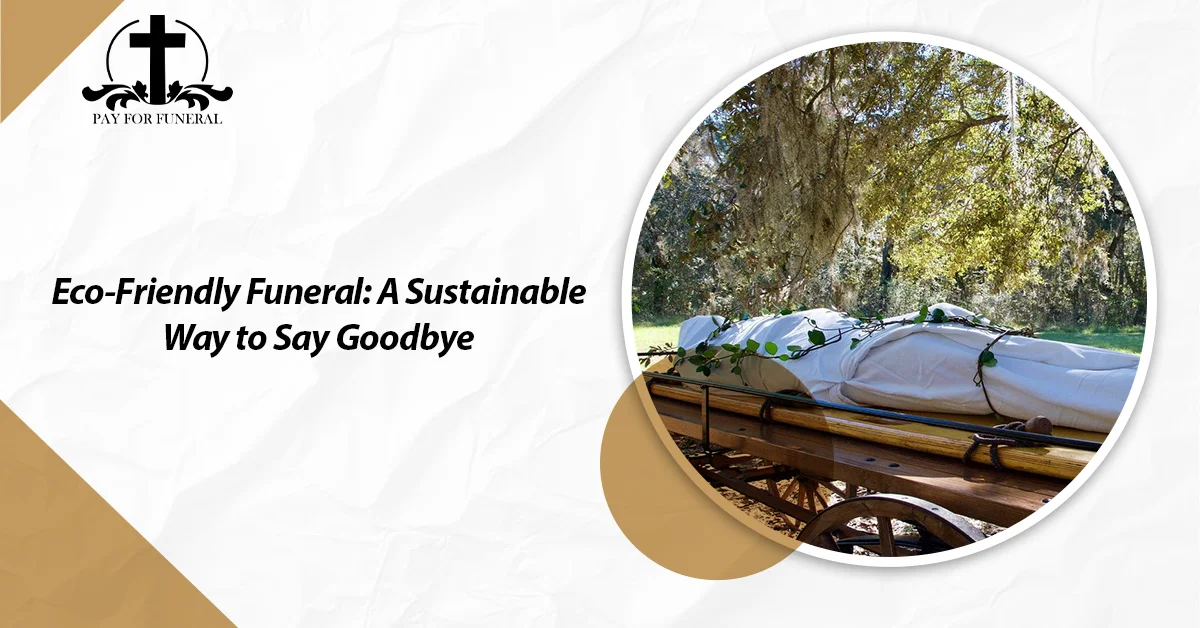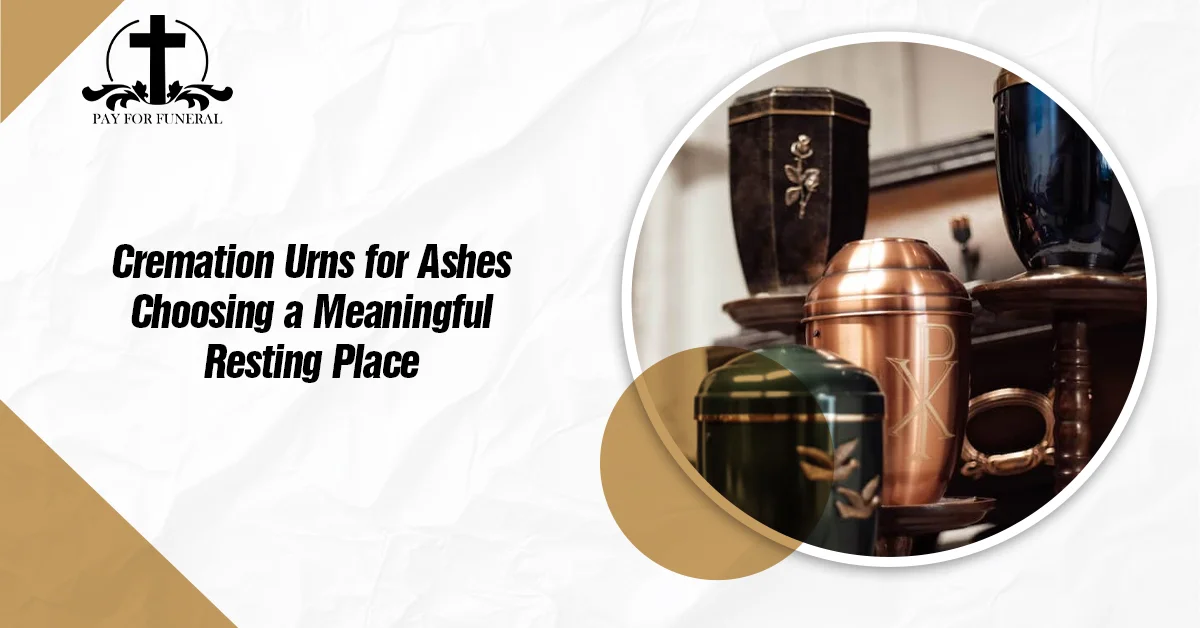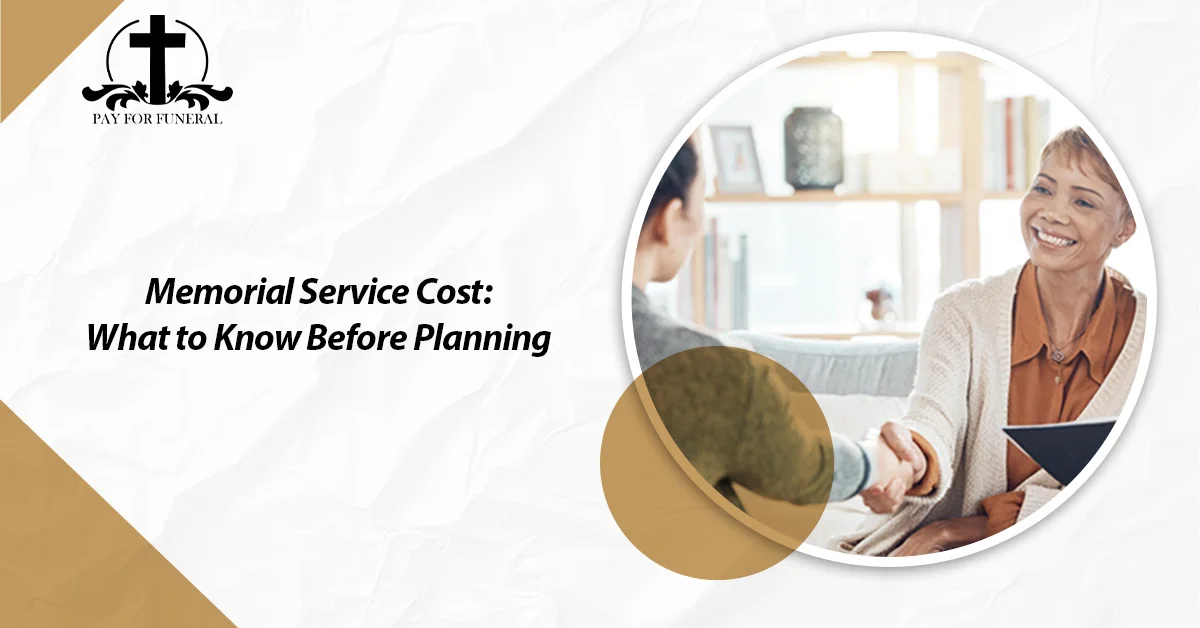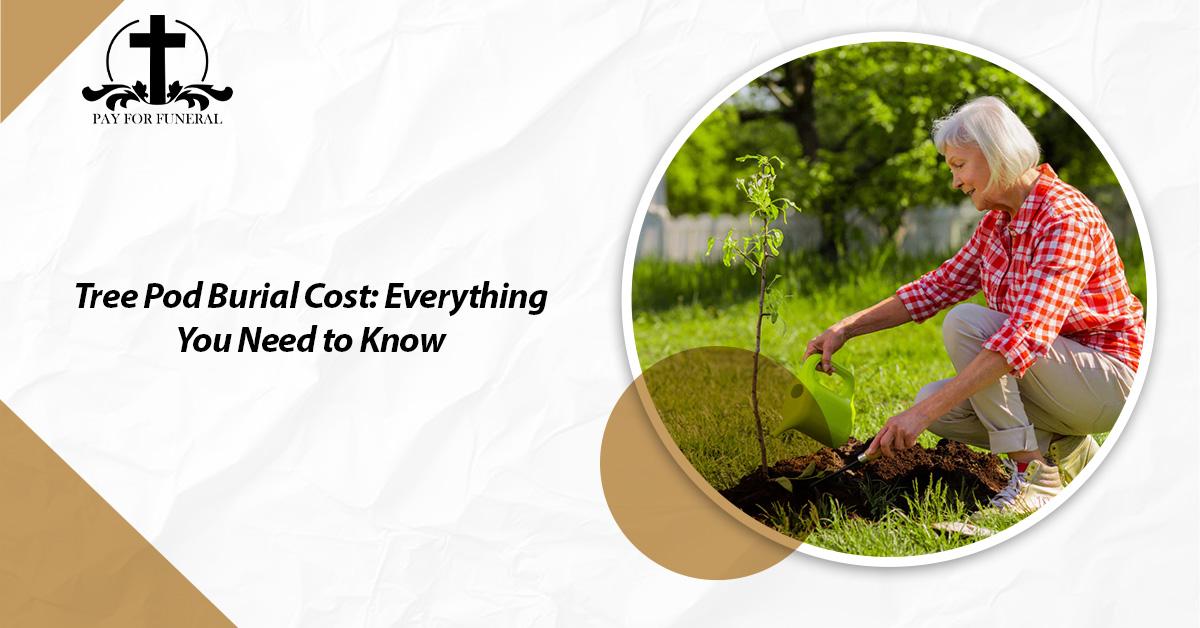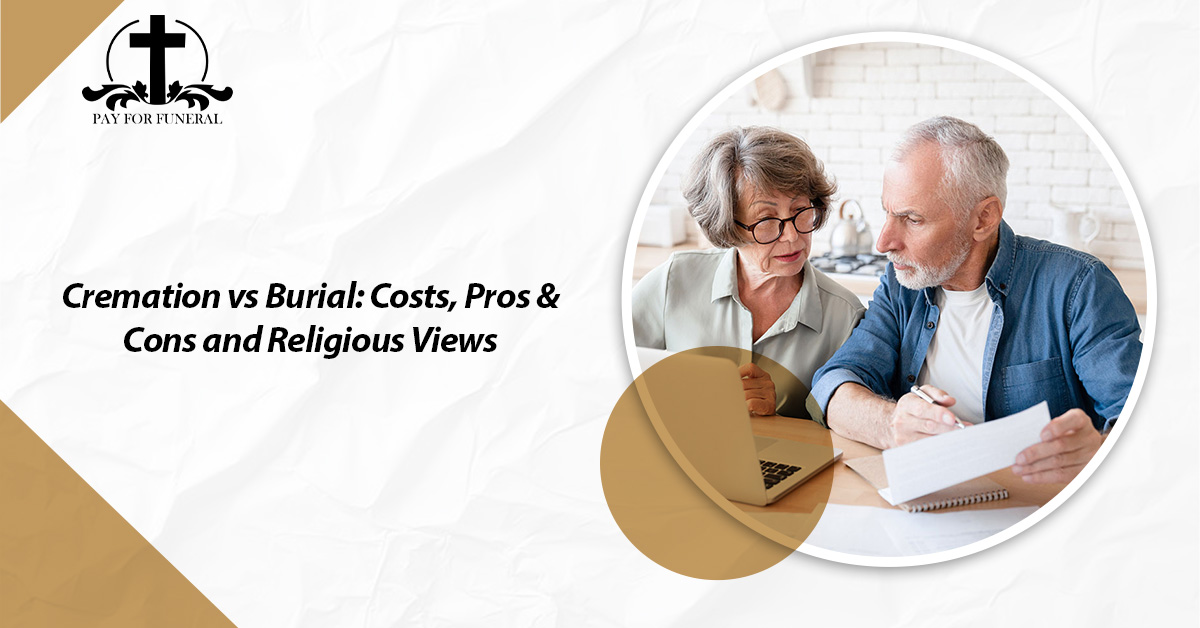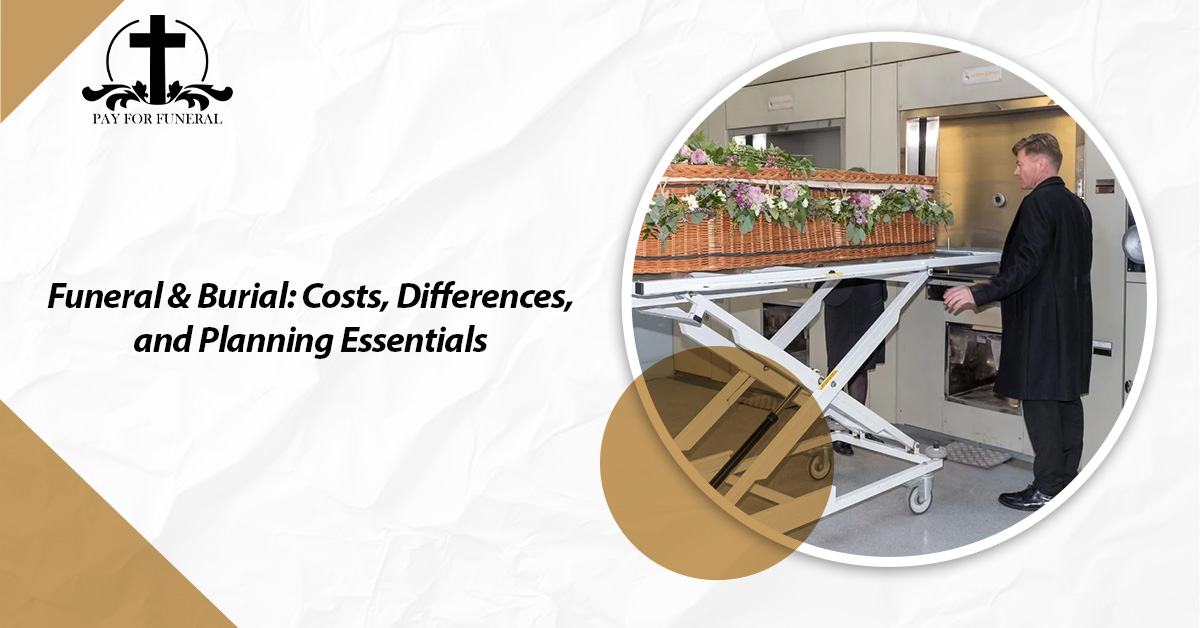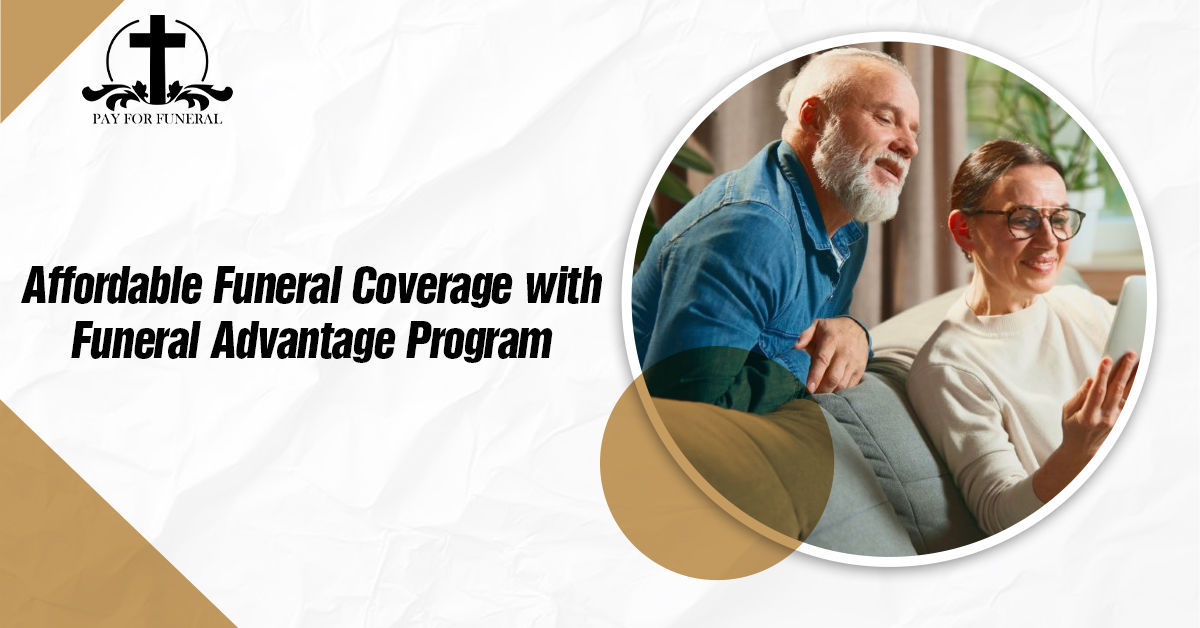Introduction Planning for the end of life is never easy. It’s a deeply personal and emotional process that can feel overwhelming especially when you’re making decisions during a time of grief or while trying to prepare for the future with care and dignity. Advantage Funeral & Cremation Services, we understand the weight of these moments. That’s why we are committed to offering support rooted in compassion, respect, and clarity. Advantage Funeral & Cremation Services is known for its straightforward, affordable options and unwavering dedication to compassionate service. With a focus on transparency, flexibility, and personalization, we help families honor their loved ones in meaningful ways without the stress of unexpected costs or complicated arrangements. In this article, we’ll guide you through the comprehensive range of services we offer, from funeral and cremation packages to memorial personalization and preplanning solutions. Whether you’re navigating immediate arrangements or preparing for the future, our goal is to provide the information and reassurance you need to make the best decisions for yourself and your loved ones. Advantage Funeral & Cremation – A Trusted Name in End‑of‑Life Care Advantage Funeral & Cremation Services operates under the well-respected Dignity Memorial network, part of Service Corporation International (SCI) North America’s largest provider of funeral, cremation, and cemetery services. Founded in 1962 and rebranded under Dignity Memorial in 1999, SCI now supports over 1,900 locations serving more than 375,000 families annually. A Heritage of Compassion and Quality Core Values: Affordability • Flexibility • Dignity Nationwide Reach Exploring Advantage Funeral Home Obituaries and Memorial Services End-of-life planning isn’t just about the arrangements—it’s also about cherishing a life well-lived. Advantage Funeral & Cremation Services makes this possible through accessible obituary listings and thoughtful memorial features, both online and in-person. Accessing Recent & Archived Obituaries Online Virtual Memorials & Online Tribute Walls Personalizing Obituaries with Memory & Media Sample Obituary Reference To explore examples of real obituaries, visit Dignity Memorial’s site (e.g., Sharon Hermo, Portland, OR). They showcase full obituary pages with images, personal biography, funeral service schedule, tribute options, and guest book features. Why This Matters Next Steps By combining user-friendly obituary access with customizable memorial tools, Advantage Funeral Home supports families in celebrating lives with dignity, connection, and heartfelt remembrance. Affordable Cremation Services That Respect Your Budget and Beliefs Transparent Pricing Breakdown Advantage emphasizes “simple choice” pricing—no hidden fees, full transparency. Reddit users confirm this clarity: “Advantage Pricing… The website very clearly lists what’s available and what each item costs… cremation with no viewing… around $1,200, celebration of life… $2,000 total.” Such transparency means families aren’t hit with surprise charges, ensuring trust and peace of mind. Cost Comparison: Cremation vs Traditional Burial While national average costs range from $6,000–$7,000 for a cremation with service and $7,000–$12,000+ for a full burial, Advantage’s streamlined cremation options can be well below $2,000 — making it a deeply cost-effective alternative . Eco-Friendly Choices: Traditional and Alternative Cremation Testimonials from Real Families Why It Matters Funeral Planning Assistance: From Pre-Need to At-Need Support Planning a funeral can be a daunting experience, whether you’re making arrangements in advance or handling decisions after a loss. At Advantage Funeral & Cremation Services, we’re here to help every step of the way offering professional, compassionate funeral planning assistance tailored to your needs and timeline. Step-by-Step Guidance — In-Person and Virtual Advantage provides flexible planning services that meet families where they are both emotionally and physically. Whether you visit one of our locations or prefer to connect from home, our dedicated staff walk you through: Appointments can be made in person, over the phone, or via secure video conferencing, giving you the comfort and convenience to plan at your own pace. Legal and Documentation Support Navigating the necessary paperwork during a time of loss can be stressful. Advantage helps ease the burden by offering: Our team ensures nothing falls through the cracks, so you can focus on honoring your loved one rather than worrying about logistics. Pre-Arranged Funeral Plans Explained Funeral pre-arrangements allow individuals to make decisions about their own services in advance, locking in today’s prices and relieving their families of future guesswork. With Advantage, preplanning includes: These plans offer peace of mind, cost protection, and emotional relief for loved ones when the time comes. Emotional and Logistical Support for Families Beyond logistics, Advantage staff are trained to offer compassionate care during emotionally difficult times. We provide: Memorial Service Planning Tailored to Your Loved One’s Legacy Advantage Funeral & Cremation Services offers memorial service planning that reflects your loved one’s unique life and beliefs. Whether religious, secular, cultural, or themed, services are fully customizable. Choose from a variety of venues and media options like slideshows, music, and readings to create a meaningful tribute. Live-streaming and hybrid memorials are available to include friends and family from afar. With personalization tools like online tribute walls, custom keepsakes, and memory tables, Advantage helps families craft a heartfelt and memorable celebration. Funeral Pre-Arrangements – Plan Ahead for Peace of Mind Funeral pre-arrangements offer numerous benefits that can ease the burden on your loved ones during a difficult time. By planning ahead, you gain financial security, emotional comfort, and logistical clarity. Preplanning helps you manage costs upfront, potentially locking in today’s prices and avoiding unexpected expenses later. Emotionally, it allows you to make thoughtful decisions without the stress of urgency, giving you and your family peace of mind. Many funeral homes offer prepaid plans that ensure funding security, meaning your wishes are guaranteed and funds are reserved specifically for your funeral needs. These plans can be customized to fit your preferences and budget, providing a clear and organized approach to end-of-life planning. Getting started is easier than you might think. Initial consultations with funeral professionals can guide you through the process, help with necessary paperwork, and present various payment options, including installments or full payment. Having your arrangements documented also simplifies the process for your family when the time comes. For a detailed guide, you can refer to Advantage’s preplanning checklist which walks you step-by-step
What Happens During Cremation? A Step-by-Step Process
Introduction Cremation is a widely chosen method for final disposition, yet many people are unfamiliar with what actually happens during the process. From the moment a body enters the crematory to the return of the ashes, cremation is a precise and carefully regulated procedure, one that’s often misunderstood or surrounded by mystery. In this article, we’ll walk you through each step of the cremation process, explaining how it works and what to expect. We’ll also uncover lesser-known facts, such as how long cremation takes, which parts of the body don’t burn, and even some of the more somber realities behind the practice. Whether you’re planning ahead, supporting a loved one, or simply curious, this guide offers honest and respectful answers to your questions about cremation. What Is the Cremation Process and How Does It Work? Cremation is a dignified and regulated process that involves several critical steps, each carefully followed to ensure both respect for the deceased and safety throughout the procedure. Let’s break down the key stages of the cremation process, from authorization to the return of ashes. 1. Authorization and Identification Procedures Before any cremation can take place, it is crucial to obtain proper authorization. Legal documents, including a signed cremation permit, must be submitted to the crematory. The family or representative of the deceased will typically provide these documents, confirming their consent for the process. Identification procedures are strictly enforced to ensure the right body is cremated. The crematory staff will perform multiple identification checks, often using wristbands or other forms of clear identification that remain with the body through the entire process. This ensures that the remains returned to the family are the correct ones. 2. Placement in the Cremation Chamber Once the necessary documentation is completed and the identification confirmed, the body is prepared for cremation. The body is placed in a cremation container, often made of wood or cardboard, which is designed to safely hold the body during incineration. The body is positioned in the cremation chamber, a specially designed oven called a retort. In the retort, the body is subjected to extremely high temperatures, typically between 1400–1800°F (760–982°C), to break down the tissue. The body is positioned in the chamber in a way that allows for optimal heat distribution and ensures the cremation process is as efficient as possible. 3. Incineration Process The cremation process itself involves the complete incineration of the body. The temperature in the retort ranges from 1400 to 1800°F (760 to 982°C), depending on the equipment and specific protocols followed. At these temperatures, all organic material is reduced to gases, leaving only bone fragments behind. The duration of the cremation process typically lasts 1.5 to 2.5 hours, depending on factors like the body’s size and the type of cremation chamber used. During this time, the body undergoes a transformation as the intense heat consumes organic matter, reducing the body to bone fragments. 4. Cooling and Processing Once the cremation is complete, the remaining bone fragments are left to cool down. This cooling process can take several hours. Once cool enough to handle, the bone fragments are carefully removed from the retort. The bone fragments are then processed. This step typically involves the use of a cremulator, a machine that crushes the bone fragments into a fine powder, resulting in what are commonly known as “ashes.” The remains are carefully sorted to ensure that no foreign materials, such as metal prosthetics, are included in the final collection. 5. Return of Remains After the cremated remains are processed, they are placed in an urn or another container chosen by the family. These remains typically consist of bone fragments that have been ground down into a fine, sandy texture, and while the term “ashes” is commonly used, they are technically the remnants of bone. The cremated remains are returned to the family in a respectful and secure manner, usually within 7–10 business days after the cremation. The urn or container can be delivered directly to the family’s home, or the family can choose to pick it up from the crematory. Key Considerations Throughout the entire cremation process, numerous standards and regulations are followed to ensure a dignified, ethical process. In North America, organizations like the Cremation Association of North America (CANA) establish and monitor industry guidelines, ensuring that each cremation is carried out with care and respect. In summary, the cremation process is a carefully orchestrated procedure, designed to handle the body respectfully and safely. From initial authorization and identification to the careful return of the remains to the family, every step ensures that the deceased is treated with dignity, and the family receives the remains in a compassionate and secure manner. Sources: How Long Is the Process? One of the most common questions families ask is: How long does cremation take? While the actual time a body spends in the cremation chamber is relatively short, the entire process from start to finish can take several hours to several days, depending on various factors. Cremation Duration: 1.5 to 3 Hours The incineration phase of cremation typically takes between 1.5 to 3 hours. The exact length depends on multiple factors, including: Crematory operators monitor and control the process throughout to ensure complete and respectful combustion. Cooling and Processing Time: 1 to 2 Hours Once the cremation is complete, the remains still consisting of bone fragments — must cool for 30 minutes to 2 hours before they can be safely handled. After cooling, the fragments are processed into a fine powder using a specialized machine. This part of the process adds about another 30 to 60 minutes, depending on the volume and consistency of the remains. Total Time Until Remains Are Returned While the physical cremation itself may take just a few hours, the total time until a family receives the ashes can be longer due to: In general, families can expect to receive the cremated remains within 1 to 7 days, although in some cases it may be faster especially if arrangements
Burial Assistance for Low-Income Families: Find Help with Funeral Costs
Introduction Funerals are expensive, and for families who are already having a hard time with money, the cost can be too much to handle.This guide will explain the different ways low-income families can get help paying for a funeral. It includes help from the government, support from each state, and programs run by charities. You’ll learn what kind of help is out there, who can get it, how much you might receive, and how to apply. Is There Burial Assistance for Low-Income Families? Yes, there is burial assistance available for low-income families. Burial assistance is financial help that can cover some or all of the costs related to a funeral, burial, or cremation. This help can come from the government, states, or private charities. It may pay for things like a basic casket, burial plot, or cremation services. Who Is Considered “Low-Income”? To qualify for burial assistance, a person or family must usually meet low-income guidelines. These are based on income limits set by the federal or state government. For example, in 2025, a family of four earning less than $31,200 a year may be considered low-income under the Federal Poverty Level (FPL). Some programs also look at assets, like savings or property. Each state or program may use slightly different income limits, so it’s important to check the rules in your area. Why Is Burial Assistance Needed? Funeral costs have gone up a lot in recent years. According to the National Funeral Directors Association (NFDA): For many families, these prices are simply too high. That’s why more and more people are looking for financial help to pay for final arrangements. Burial Assistance for Low-Income Families in California Statewide & County‑Specific Programs California doesn’t offer a statewide burial assistance program, but most counties have a General Assistance (GA/General Relief) program that can cover funeral or cremation costs for those in need . Examples: How to Apply & Who Qualifies County Contacts – How to Reach Help Typical Funding Limits Low-Income Cremation Assistance Options Cremation vs. Traditional Burial County & Nonprofit Support Veterans’ Benefits for Cremation When Direct Cremation Is Fully Covered Key Takeaways Option Who It Helps Coverage County GA/General Relief Indigent CA residents Basic cremation or burial VA Burial Allowance Honorable veterans $300–$762 + cemetery benefits Nonprofits & Funds Eligible low-income families Grants up to $1,000+ Body Donation Registered individuals Free cremation after service Government Assistance for Funeral Costs If you’re struggling to afford a funeral, some government programs may be able to help. These can come from the federal government, your state, or even a tribe if you’re a member of one. 1. Temporary Assistance for Needy Families (TANF) TANF is a federal program that gives money to low-income families with children. Some states allow TANF funds to be used for emergency needs like funeral costs. You must: Important: Not all states allow TANF to be used for funeral expenses. You’ll need to check with your local office. 2. Social Security Death Benefit (also called the Lump-Sum Death Benefit) Social Security offers a small one-time payment of $255 to help with funeral costs. It is paid to: This Lump-Sum Death Benefit must be claimed within two years of the person’s death. You can apply by calling 1-800-772-1213 or visiting a local Social Security office. Note: This payment is small and won’t cover the full cost of a funeral, but every bit helps. 3. State Funeral Assistance Programs Some states offer special funeral grants for low-income residents. These vary a lot by location: Examples: To qualify, you usually must show: 4. Tribal Burial Assistance If you are a member of a federally recognized Native American tribe, you may be able to get help through: The BIA may provide help with: To apply, contact your tribal social services office or a local BIA agency. You’ll need to show financial need and tribal membership. Funeral Assistance for Low-Income Families in California If you’re facing the loss of a loved one and need help covering funeral expenses, California offers several programs that may assist, especially for low-income families. Here’s a breakdown of key options: 1. CalWORKs Funeral Expense Benefits Overview:CalWORKs (California Work Opportunity and Responsibility to Kids) is California’s welfare program for families with children. In certain situations, CalWORKs can provide one-time funeral or burial assistance through county welfare offices. Eligibility: Average Assistance:While the exact amount varies by county, typical allowances range from $500 to $2,000, depending on county policies and available funds. How to Apply: 2. California Victim Compensation Board (CalVCB) Overview:The CalVCB assists victims of violent crimes and their families with various expenses, including funeral costs, when the death results from a qualifying crime. Eligibility: Assistance Provided: Application Process: Comparison at a Glance Program Maximum Assistance Eligibility Criteria Application Process CalWORKs Funeral Benefits $500–$2,000+ Active CalWORKs recipient, low-income Apply through county office CalVCB Funeral Assistance Up to $7,500 Death due to qualifying violent crime Apply via CalVCB portal Additional Resources: Burial Help from Charities and Nonprofits If government help isn’t enough, many charities and nonprofits can also assist with funeral costs: Understanding the Social Security Death Benefit When someone who received Social Security benefits passes away, the family may be eligible for a one-time death payment: Conclusion Funeral costs can feel overwhelming, but there are resources out there for families in need. The most accessible options include the Social Security death benefit, state or county funeral grants, CalWORKs support in California, and nonprofit or religious aid. Whether you’re applying for a government program or reaching out to a local charity, every bit of help can ease the burden. Don’t overlook crowdfunding or community support; many families find relief through combined efforts. If you or someone you know is in need, don’t hesitate to apply help is available. Even small steps can make a big difference in this difficult time. Frequently Asked Questions What is burial assistance for low-income families? Burial assistance is financial help for families who can’t afford funeral costs. It may come from government programs, nonprofits, or
Eco-Friendly Funeral: A Sustainable Way to Say Goodbye
Introduction Did you know that a traditional funeral can leave a carbon footprint as large as a cross-country flight? From embalming chemicals to hardwood caskets and cement burial vaults, many common funeral practices can have a big impact on the environment. That’s why more and more people are choosing eco-friendly funerals. These are funerals that are planned with the environment in mind. They use fewer resources, create less waste, and focus on natural ways to say goodbye to loved ones. In this article, we’ll explain what eco-friendly funerals are, explore the different green options available, show you how to plan one step by step, and answer some of the most common questions people have. Whether you’re planning ahead or making arrangements for a loved one, this guide will help you make a meaningful and earth-friendly choice. What Is an Eco-Friendly Funeral? An eco-friendly funeral, also known as a green funeral, sustainable funeral, or earth-friendly burial, is a way of honoring someone’s life while also caring for the planet. It focuses on reducing the environmental impact of the burial or cremation process by using natural, biodegradable, and sustainable materials. Unlike traditional funerals, which often involve embalming fluids (that contain harmful chemicals like formaldehyde), metal or hardwood caskets, and concrete burial vaults, eco-friendly funerals take a simpler, cleaner approach. Traditional methods can pollute the soil, use non-renewable resources, and take up land that is not easily returned to nature. Key principles of an eco-friendly funeral include: According to the Green Burial Council, a nonprofit that sets standards for green funerals in the U.S., eco-friendly burials can help restore natural areas and protect the environment. In the UK, the Natural Death Centre also promotes natural burials and offers guidance for families who want a greener way to say goodbye. Eco-friendly funerals are not just a trend, they’re a thoughtful and meaningful choice for those who care about the earth, even after death. Eco-Friendly Funeral Services: What to Expect When you choose an eco-friendly funeral, the services offered may look a bit different from those at a traditional funeral home—but the care and respect remain the same. These services are designed to honor the deceased while also protecting the environment. What Eco-Friendly Funeral Homes Offer Eco-friendly funeral homes often provide: How Services Differ from Traditional Funerals Cost Comparison Eco-friendly funerals are often more affordable than traditional funerals.That’s because: While prices vary by location and choice, families can often save hundreds or even thousands of dollars. Certifications and Standards To ensure you’re working with a trustworthy provider, look for funeral homes certified by organizations like the Green Burial Council (GBC) in the United States. This certification means the provider follows strict standards for sustainability, transparency, and ethical practices. By choosing a certified, eco-friendly funeral home, you can feel confident that the service is both respectful to your loved one and gentle on the earth. Eco-Friendly Funeral Options: Ways to Go Green There are several thoughtful, sustainable ways to honor a loved one while reducing environmental impact. Here are some of the most popular eco-friendly funeral options, each offering a unique way to return to the earth naturally: Natural Burial Green Cremation (Alkaline Hydrolysis) Burial in a Conservation Cemetery Memorial Forests or Tree Planting Tributes Planning an Eco-Friendly Funeral: Step-by-Step Planning a green funeral doesn’t have to be complicated. By taking simple, thoughtful steps, you can create a farewell that honors both your loved one and the planet. 1. Choose an Eco-Friendly Funeral Home 2. Understand Legal Considerations 3. Create a Green Funeral Plan or Advance Directive 4. Talk to Your Family 5. Select Green Materials 6. Minimize Travel & Printed Materials Eco-Friendly Funeral Homes: What to Look For Choosing the right funeral home is an important part of planning a sustainable farewell. Not all funeral homes offer truly eco-friendly options, so it’s important to ask the right questions and know where to look. Questions to Ask When Evaluating Funeral Homes Before choosing a provider, ask: Where to Find Certified Green Funeral Providers These trusted directories can help you locate eco-conscious funeral homes: Notable Providers (Optional Examples) Here are a few examples of providers known for their eco-friendly services: Eco-Friendly Burial vs. Traditional Burial: Key Differences Here’s a simple comparison table to highlight how eco-friendly burials differ from traditional ones: Aspect Traditional Burial Eco-Friendly Burial Embalming Chemicals Yes (formaldehyde-based) No (natural preservation methods) Casket Material Hardwood or metal Biodegradable (e.g., wicker, pine) Vault Use Usually required Not used Land Impact High (permanent land use, concrete) Low (natural return to earth) Cost $$$ (more expensive) $$ (often more affordable) Eco-friendly burials are designed to minimize harm to the environment, simplify the process, and often reduce overall expenses. They offer a thoughtful alternative for those who want a more natural and sustainable end-of-life option. Conclusion Choosing an eco-friendly funeral offers many benefits: it helps protect the environment, often costs less, keeps things simple, and creates a meaningful legacy for future generations. By making thoughtful choices now, you can honor your loved ones while caring for the planet. Considering a green goodbye? Start your eco-friendly funeral plan today. FAQs About Eco-Friendly Funerals Q: What is the most environmentally-friendly funeral? A natural burial without embalming in a conservation cemetery. Q: What is an eco-friendly funeral? A funeral that avoids harmful chemicals and uses biodegradable, sustainable materials. Q: Is there an alternative to a funeral? Yes, direct cremation, tree planting tributes, or body donation are common options. Q: What is the most natural way to be buried? Burial in a biodegradable shroud or casket without embalming in a green cemetery.
Cremation Urns for Ashes: Choosing a Meaningful Resting Place
Introduction Cremation urns hold deep emotional and practical meaning for families who have lost a loved one. More than just containers, they are a lasting way to honor and remember someone special. Whether displayed at home, buried, or kept in a special place, cremation urns for ashes help keep memories close. Choosing the right urn can feel overwhelming during an already difficult time. This guide is here to help. We’ll explain the different types of urns, how much they cost, what materials are available, and how you can personalize them to reflect your loved one’s life. We’ll also answer common questions so you can make the best decision with confidence and care. Cremation Urns for Human Ashes: What You Need to Know Cremation urns are specially designed containers used to hold the ashes of a loved one after cremation. They are an important part of the memorial process, offering a respectful and meaningful way to honor and remember someone who has passed. Often called memorial urns or funeral urns, these vessels come in many styles, sizes, and materials to suit different preferences and needs. Urn Sizes and Capacities Cremation urns are available in various sizes, depending on who they are meant for: Personal Cremation Urns for Ashes Personal cremation urns are designed for individual use and can be customized with names, dates, photos, or special messages. Whether displayed at home, placed in a niche, or buried, these urns serve as a beautiful reminder of a life well lived. Whether you’re looking for a traditional funeral urn or a unique keepsake to cherish, understanding your options will help you choose something that truly honors your loved one. Small Cremation Urns for Human Ashes: When Are They Used? Small cremation urns for human ashes are used in special situations where only a small amount of ashes needs to be kept. Though they are smaller in size, their emotional value is just as great. These urns are meaningful ways to hold onto a personal memory of a loved one. When Are Small Urns Used? Here are some common scenarios where small urns are the right choice: Material and Design Options Small cremation urns come in many materials, just like larger funeral urns: Designs range from simple and classic to deeply personal featuring engraved names, religious symbols, hearts, or even nature-inspired themes. Whether you’re honoring a child, sharing ashes among loved ones, or simply keeping a small part of someone close, small cremation urns offer comfort and remembrance in a compact and beautiful form. Companion Urns for Cremation Ashes: A Symbol of Eternal Togetherness Companion urns are specially designed containers that hold the ashes of two individuals, often a married couple, partners, or very close family members. By offering dual capacity in a single piece, these urns symbolize the bond that continues even after life’s journey ends. Why Choose a Companion Urn? Design Options Materials and Personalization Companion urns come in a range of materials such as marble, wood, metal, or biodegradable stone. Many can be engraved with names, dates, quotes, or meaningful symbols (like intertwined rings or hearts) to reflect the couple’s unique story. Choosing a companion urn allows families to honor two lives in one elegant tribute, reminding us that love and connection endure beyond the physical world. Specialty Urns: Unique and Purposeful Choices Specialty urns are unique cremation urns designed to reflect a person’s identity, beliefs, passions, or service. These urns go beyond traditional styles and offer a meaningful way to honor a loved one’s life story in a more personalized and expressive way. Examples of Specialty Urns Personalization Options Specialty urns allow for a high level of customization, such as: By choosing a specialty urn, families can create a personal and purposeful memorial that honors not just the memory, but the personality and passions of a loved one. Eco-Friendly Urns for Ashes: A Sustainable Farewell As more people look for ways to reduce their environmental impact, eco-friendly urns for ashes are becoming a popular choice. These urns offer a respectful and sustainable way to say goodbye, while also honoring a loved one’s commitment to nature. Types of Eco-Friendly Urns Environmental Benefits and Certifications Eco-friendly urns are often certified by environmental organizations for their safe, non-toxic materials. They support green burial practices, reduce carbon footprints, and are often handmade using sustainable methods. Choosing an eco-friendly urn is more than a personal decision, it’s a legacy of love for both the earth and future generations. Decorative Urns: Honoring Loved Ones with Style Decorative urns serve as both a memorial and a piece of art, designed to be displayed in the home with dignity and beauty. These urns combine craftsmanship with emotional value, helping families keep their loved one close in a comforting and elegant way. Craftsmanship and Aesthetic Value Decorative urns are often handcrafted, featuring intricate designs, carvings, or painted details. They are meant to blend in with home decor while still standing out as meaningful tributes. Whether minimalist or ornate, each piece tells a story. Common Materials Display Considerations and Cultural Influences Many families place decorative urns in living rooms, bedrooms, or private memorial spaces. Cultural traditions may influence urn placement or decoration such as placing flowers, candles, or photos nearby. Some cultures view urns as sacred items that deserve a special, peaceful space. Decorative urns offer a lasting and stylish tribute, blending memory with meaningful design to honor a loved one with grace. Average Cost by Types of Urns: Budgeting for a Memorial When planning a memorial, it’s important to understand the costs involved in choosing the right urn. Prices can vary widely depending on the type, material, design, and where you purchase it. This guide will help you budget by breaking down the average cost of different cremation urns for ashes. Cost Ranges by Urn Type What Affects the Price? Several factors influence how much an urn will cost: Understanding these cost ranges and factors can help you choose a cremation urn that fits your needs, honors your
Memorial Service Cost: What to Know Before Planning
Introduction Planning a memorial service while dealing with the loss of a loved one can feel overwhelming. One of the first questions many families ask is, “How much does a memorial service cost?” The answer can vary, depending on location, choices, and services involved. This article will help you understand memorial service costs, whether you’re looking for average prices or searching for affordable memorial service options near you. We’ll walk you through what to expect, how to plan, and ways to save so you can focus on honoring your loved one. How Much Does a Memorial Service Cost? If you’re wondering how much a memorial service costs, you’re not alone. On average, the cost of a memorial service in the U.S. ranges from $500 to $2,000 or more, depending on several factors. These include your location, the type of service you choose, and any extras you decide to include. Cost Can Vary by Location and Service Type Memorial service costs often depend on where you live. For example, prices in large cities are usually higher than in smaller towns. Services held in Oceanside, CA, may be more affordable than those in places like Los Angeles or San Francisco. The type of service also affects the price. A simple, secular service at home or a park may cost less than a religious ceremony held in a church or funeral home. What’s Typically Included in Memorial Service Costs? Here’s a general breakdown of what you might pay for: You may also choose to include extras such as music, memory tables, or keepsakes, which can increase the total cost. National and Local Estimates According to the National Funeral Directors Association (NFDA), the median cost of a basic memorial service is around $925, not including burial or cremation. In Oceanside, CA, local estimates show a typical price range between $800 and $1,500, depending on the venue and services selected. Memorial Service Costs in Oceanside Local Price Ranges In Oceanside, typical memorial service costs vary based on the provider and services selected: Basic funeral home services, including staff, use of facilities, permit handling, and hearse, typically range from $2,300–$2,400 Local Providers & Price Comparison Provider Package Type Estimated Cost Oceanside Mortuary Direct cremation + memorial $2,825 Eternal Hills Memorial Park Direct cremation $2,485 Legacy Cremation Services Affordable funeral homes Varies; advertised as lowest-cost locally Tulip Cremation Cremation (direct/traditional) $600–$5,000+ San Diego Memorial Society Cremation plans from $900 Member benefit Affordable & Nonprofit Options Important Local Resources Cost of Cremation and Memorial Service When planning a service, many families ask about the cost of cremation and memorial service. Prices vary depending on whether you choose direct cremation (with no service) or cremation combined with a viewing or memorial ceremony. Direct Cremation vs. Cremation with Memorial Service Average Cremation Costs The average cost of cremation in the U.S. ranges from $700 to $3,000, depending on what’s included: These prices often include transportation, paperwork, basic container, and return of remains. Combined Cremation + Memorial Packages Many funeral homes and cremation centers offer bundled packages that combine cremation with a memorial service. These packages can help you: For example, some Oceanside providers offer cremation + memorial packages starting around $2,300–$2,800 a lower cost than traditional funerals with burial. Expenses You Can Avoid Not all services offered by funeral homes are required. To stay within budget, consider avoiding: Common Cremation Options (Cost Comparison) Average Cost of Cremation and Memorial Service Understanding the average cost of cremation and memorial service can help you make informed decisions when planning a farewell for a loved one. Compared to traditional burial, cremation is often significantly more affordable, especially when combined with a memorial service instead of a full funeral. National Average Cremation Costs According to the National Funeral Directors Association (NFDA): Cremation vs. Traditional Burial Costs Traditional funerals with burial typically cost between $7,000 and $12,000, which includes embalming, a casket, gravesite, and service fees. In comparison, cremation eliminates several of those expenses. Choosing cremation can reduce or eliminate costs like: This makes cremation a more budget-friendly and flexible option for many families. Bundle Discounts: Cremation + Memorial Many funeral homes offer discounted packages that combine cremation with a memorial service. These bundles may include: These packages can save hundreds to thousands of dollars when compared to paying for each item individually. Suggested Comparison Table Here’s a simple cost comparison between Cremation and Traditional Burial: Low Cost Memorial Services: Budget-Friendly Options You don’t have to spend thousands to create a meaningful memorial. If you’re trying to plan a low cost memorial service under $1,000, here are practical ways to reduce expenses without sacrificing dignity. Budget-Friendly Tips Budget Checklist Many families have hosted touching services for under $1,000 by combining these strategies. Church Memorial Service Cost A church memorial service can be one of the most affordable and comforting options, especially if the deceased was a member of the congregation. Typical Cost Structure Churches often don’t charge fixed fees for memorial services. Instead, they may request a donation, typically ranging from $100 to $500, depending on the church and services provided. In some cases, if the family or deceased was an active member, the service may be offered at no cost. What’s Usually Included Denominational Differences How to Approach a Church If the deceased had a church home, contact the office or pastor directly. Be honest about your budget and ask what services they can provide. Even if the person wasn’t a member, many churches are still willing to help local families in need. Using a church can also help reduce funeral service costs by eliminating the need for a commercial venue or funeral home expenses for the memorial. Avoiding Unnecessary Funeral Expenses Many families face emotional pressure to spend more than necessary when planning a service. Being aware of common funeral home upsells and your rights can help you avoid overspending. Common Upsells to Watch For Know Your Rights: The Funeral Rule Under the FTC’s Funeral Rule, you have the right to: Tips
Tree Pod Burial Cost: Everything You Need to Know
Introduction: Traditional burials can be very expensive, bad for the environment, and often feel cold or impersonal. That’s why many people are now looking for better and more natural options. One of the most popular new choices is tree pod burial. This is a gentle, eco-friendly, and affordable way to return to the earth and help new life grow. In this article, we’ll explain what tree pod burial is and how much it costs. We’ll also talk about the good and bad sides of this method, where you can find tree pod burial services, and how it compares to other green burial options. Lastly, we’ll answer some common questions people have about this new and meaningful way to say goodbye. What Are Tree Pod Burials? Tree pod burials are a modern and eco-friendly way to say goodbye to a loved one. Instead of using a traditional casket and headstone, the body is placed inside a biodegradable pod, often called an eco burial pod. This pod is shaped like an egg or capsule and is made from natural materials that break down over time. During the process, the body is gently curled into a fetal position inside the pod, a pose that represents the circle of life. A tree seedling is then planted directly above the pod. As the body and pod return to the earth, they help nourish the soil and support the growth of the tree. This type of green funeral alternative is meaningful to many people because it gives back to nature. The idea is simple but powerful: even in death, a person can bring new life to the planet. Over time, the tree becomes a living memorial, a natural and peaceful way to be remembered. Tree pod burials are growing in popularity as more people look for sustainable, gentle ways to honor life and protect the earth. Tree Burial Pros and Cons Choosing a burial method is a deeply personal decision, and it’s important to look at both the emotional and practical sides. Tree pod burials offer many unique benefits, but they also come with a few challenges. Here’s a look at the main pros and cons to help you decide if this green funeral alternative is right for you or your loved one. Pros One of the biggest advantages of tree pod burials is that they are environmentally friendly. The body is placed in a biodegradable pod, and there are no harmful chemicals like embalming fluids used. This makes it a cleaner, more natural return to the earth. Over time, the body helps nourish the soil and support the growth of a tree, creating a lasting and living memorial. Many people also find this type of burial symbolic and spiritual. The idea of new life growing from death is comforting and meaningful to those who want their passing to give something back to the planet. It’s a peaceful and beautiful way to be remembered. In addition, tree pod burials are often more affordable than traditional burials. Compared to expensive caskets, burial plots, and funeral services, this is one of the more affordable green burial options available today. Cons However, there are some downsides to consider. One major issue is limited availability. Tree pod burial services are still new and may not be offered in many areas. You may need to travel or make special arrangements to access them. Another concern is that this method may not align with some religious traditions. Certain faiths have specific rules or beliefs about burial practices, and a tree burial might not be accepted. Finally, legal restrictions in some U.S. states can make full-body tree pod burials difficult or even illegal. Laws vary widely, so it’s important to check local regulations before making plans. Tree Pod Burial Costs: What to Expect One of the most common questions people have is: How much does a tree pod burial cost? Compared to traditional funerals, this eco-friendly option is often more affordable. Still, prices can vary based on the type of pod, the tree you choose, and where the burial takes place. The typical tree pod burial cost ranges from $1,000 to $5,000. This wide range depends on the provider, services included, and whether the burial involves a full body or just cremated ashes. Factors That Affect Burial Pod Prices Several things can influence the final price: 1. Type of Pod: There are different pod designs on the market. For example, the Capsula Mundi is a full-body burial pod that often costs more than an ashes into a tree pod like the Bios Urn. Full-body pods usually require more planning and may face more legal restrictions, which can also increase costs. 2. Type of Tree: Some providers let you choose from a variety of trees — such as oak, cherry, pine, or maple. Certain species may cost more depending on their size, rarity, or growth needs. 3. Burial Location Fees: Whether you’re planting in a memorial forest, a green cemetery, or private land, location matters. Costs can rise based on land use, permits, and whether the site includes ongoing care. 4. Cremation Services: If you choose a pod for ashes rather than a full-body burial, cremation costs are often separate unless included in a package. The ashes into the tree cost with cremation included usually falls between $1,000 and $3,000. 5. Maintenance or Perpetual Care: Some green burial providers offer regular maintenance of the burial site or forest. While not always required, this service can add to the total price. Comparison to Traditional Burial A traditional burial in the U.S. typically costs between $7,000 and $12,000, including a casket, embalming, cemetery plot, headstone, and funeral services. In contrast, tree pod burials are much more affordable especially if you’re choosing a cremation-based option. By avoiding costly materials and focusing on sustainable, natural practices, burial pod prices offer a budget-friendly and meaningful alternative for individuals and families. Pod Burial Locations: Where Are They Offered? As interest in eco burial pods continues to grow, more countries
Cremation vs Burial: Costs, Pros & Cons and Religious Views
Introduction Saying goodbye to someone we love is never easy. It’s a deeply personal moment, and choosing how to honor their memory is one of the most important decisions we’ll ever make. This article will help you understand the different options available when it comes to laying a loved one to rest. We’ll look at how much each choice costs, the good and bad sides of each, what different religions and the environment have to say about them, and share some helpful numbers and common questions to guide you in making the best decision for your family. Cremation vs Burial – An Overview When it comes to saying goodbye to a loved one, the choice between cremation and burial is deeply personal. Some families follow long-standing traditions, while others consider cost, environmental impact, or religious beliefs. Understanding the differences between cremation and burial can help make this emotional decision a little easier. Cremation is the process of using high heat to reduce a body to ashes. The ashes, also called “cremains,” are usually placed in an urn and can be kept, buried, or scattered in a meaningful place. Traditional burial, on the other hand, involves placing the body in a casket, usually after embalming, and burying it in a cemetery plot. Burial often includes a full funeral service and a graveside ceremony. A Brief Look at History Burial has been the most common practice for centuries in many cultures and religions, especially in the West. Cremation, while long accepted in Eastern cultures, was less common in the U.S. and Europe until the 20th century. Over time, views on cremation have changed, and it is now seen as a respectful and practical option by many families. Cremation vs Burial: What Do the Numbers Say? According to the National Funeral Directors Association (NFDA): These numbers highlight a clear trend: cremation is now more common than burial and continues to rise each year. This shift is driven by factors like lower costs, fewer religious restrictions, and more flexible memorial options. Price Comparison – Cremation vs Burial One of the biggest factors families consider when choosing between cremation and burial is cost. The price of final arrangements can vary widely depending on location, service choices, and personal preferences. Understanding the typical expenses for both options can help you plan ahead and make informed decisions. Cremation is generally more affordable than traditional burial. Direct cremation, which includes only the basic service without a ceremony, usually costs between $1,000 and $2,500. If you include a memorial service, viewing, or other extras, the total can rise to around $6,000 to $7,000. In contrast, traditional burial is often more expensive. A standard funeral with embalming, viewing, casket, ceremony, and cemetery plot can cost $7,000 to $12,000 or more. Simplified burial options, with fewer services, may be available for less but are still typically costlier than cremation. Average Price Comparison Geographic Variations Costs can vary depending on where you live. For example: Factors That Affect the Cost Several elements can influence how much you’ll pay: In summary, cremation is usually the more cost-effective choice, especially for families looking for simple or flexible options. Burial, while traditional, comes with higher average costs due to caskets, plots, and more involved services. Cremation vs Burial Pros and Cons Choosing between cremation and burial involves more than just cost; each option has its own emotional, practical, and cultural considerations. Here’s a clear breakdown of the pros and cons of cremation vs burial to help guide your decision. Pros of Cremation Cons of Cremation Pros of Burial Cons of Burial By weighing these pros and cons, you can choose the option that best honors your loved one’s wishes, your family’s needs, and your personal beliefs. Cremation Process vs Burial Process Understanding the cremation process vs burial process can help families make informed, respectful choices. While both options honor the life of a loved one, they follow different steps, timelines, and emotional experiences. Cremation Process – Step by Step Burial Process – Step by Step Timeframe Comparison Legal and Procedural Requirements Emotional and Psychological Aspects Both processes are respectful ways to say goodbye. The right choice depends on your family’s beliefs, emotional needs, and logistical considerations. Eco-Friendly Burial Alternatives Green Burials Avoid embalming chemicals and use biodegradable materials, allowing the body to naturally decompose and help preserve ecosystems. Biodegradable Urns Made from recycled paper, plant fibers, or other natural materials, these urns break down naturally when buried, reducing environmental impact. Aquamation (Alkaline Hydrolysis) Uses water and alkaline solutions to gently break down the body, producing fewer emissions and using less energy than traditional cremation. Environmental Impact Comparison Traditional cremation releases about 540 kg of CO₂ per body, while aquamation emits around 90 kg. Green burials avoid chemical pollution and conserve land, making them a much greener choice overall. Religious Views on Cremation and Burial Religious beliefs strongly influence how individuals and families make end-of-life decisions. Below is a brief overview of religious views on cremation and burial, including key practices and beliefs from major faiths. Christianity Islam Judaism Hinduism Buddhism Influence on End-of-Life Choices Conclusion Cremation is generally more affordable and flexible, while burial offers tradition and a physical place of remembrance. Each option carries its own financial, spiritual, and emotional considerations. Ultimately, the “right” choice depends on your budget, personal values, cultural customs, and religious beliefs. To avoid stress during difficult times, discuss your preferences early with loved ones or consult a funeral planner to make informed, thoughtful decisions in advance. FAQs – Cremation vs Burial Q: How much is cremation vs burial? Cremation typically costs $1,000–$4,000, while burial ranges from $7,000–$12,000.You can save by choosing direct cremation or skipping embalming and a formal service. Q: What is the cost of cremation vs burial? Direct cremation can be as low as $500–$2,000; a traditional burial can exceed $10,000.Costs vary by location, service choices, and funeral provider. Q: What does the Bible say about cremation vs burial? The Bible doesn’t forbid cremation and focuses
Funeral & Burial: Costs, Differences, and Planning Essentials
Introduction Making end-of-life decisions can be both emotionally and financially overwhelming. During such a difficult time, it’s hard to know where to begin or what choices are best. Whether you’re planning ahead or dealing with a recent loss, understanding the funeral and burial process can help ease the stress. This article is here to provide clear and simple information about what happens during a funeral and burial, how much it may cost, the differences between your options, ways to get financial help, and answers to the most common questions people ask. Funeral and Burial Difference: Understanding the Basics Understanding the difference between a funeral and burial is important when planning or preparing for end-of-life services. Although they often happen together, they are not the same thing. A funeral is a ceremony to honor and remember the person who has passed away. This event may include family and friends, and it can be held at a funeral home, church, or other location. The body may be present in a casket (called a viewing or wake), or it may not be present at all.Funerals can include prayers, music, eulogies, or personal touches based on the person’s beliefs or wishes. A burial is the process of placing the body into the ground, typically in a cemetery. This includes the gravesite, casket, and often a headstone to mark the location. Though funerals and burials often go hand in hand, they don’t have to. For example: For more options, you can compare burial vs cremation, which are two common choices families make based on personal, cultural, or financial reasons. Cost of Funeral and Burial: What to Expect Planning a funeral and burial can come with many expenses. Knowing what to expect can help families make informed and affordable choices. According to the National Funeral Directors Association (NFDA), the average cost of a funeral with a burial in the U.S. is around $8,000 to $10,000. However, this number can vary depending on location, services, and personal preferences. Here’s a basic breakdown of typical funeral and burial charges: Funeral vs Burial vs Cremation Cost Comparison Service Type Average Cost Includes Funeral + Burial $8,000 – $10,000 Ceremony, casket, plot, headstone, services Funeral + Cremation $6,000 – $7,000 Ceremony, cremation, urn, services Direct Cremation Only $1,000 – $3,000 Cremation without a formal funeral Direct Burial Only $2,000 – $4,000 Burial without ceremony or extra services Funeral and Burial Expenses: What’s Included? Planning a funeral can be emotionally overwhelming and financially daunting. Understanding the typical costs involved helps families make informed decisions and avoid unexpected expenses. Common Funeral and Burial Expenses Here’s an itemized list of the most common services and items included in funeral and burial costs: Hidden Fees Often Overlooked In addition to the obvious costs, families are sometimes surprised by extra charges such as: Reviewing Funeral Home Contracts and Estimates Before signing anything, request an itemized price list; funeral homes are legally required to provide one under the FTC Funeral Rule. Here are some tips: Funeral and Burial Assistance: What Help Is Available? If you’re concerned about funeral and burial costs, you’re not alone. Many families seek financial help and fortunately, several resources are available. Government Programs Nonprofit and Religious Aid Many religious institutions or nonprofit organizations offer aid to families in need, including: Reach out to local churches, mosques, synagogues, or interfaith networks for guidance. State and Local Assistance Programs Some states and counties provide funeral assistance through human services departments. This may include: Check your state’s Department of Human Services or local health department website for eligibility and applications. Crowdfunding and Community Support When formal support falls short, many families turn to: While crowdfunding can help ease financial pressure, be transparent and clear about costs and needs when reaching out. Affordable Funeral and Burial Options: Planning With a Budget Funerals don’t have to be financially overwhelming. With some planning and knowledge of your options, it’s possible to honor a loved one meaningfully without overspending. Low-Cost Alternatives: Direct Burial and Direct Cremation Both options significantly reduce costs while still allowing for personalized remembrance. Funeral Packages vs. À La Carte Pricing Funeral homes often offer: Tip: Always ask for a General Price List (GPL) and compare the costs of both options before deciding. Preplanning and Prepaid Funeral Plans Planning ahead can save money and ease the emotional burden on loved ones: Caution: Review prepaid contracts carefully and ensure the funds are protected (e.g., in a trust or insurance-backed plan). Green or Eco-Friendly Burials A growing number of families are choosing green burials, which can be: Also look for natural burial grounds or hybrid cemeteries that accommodate eco-conscious practices. Burial vs. Cremation: Which Is Right for You or a Loved One? Choosing between burial and cremation is a deeply personal decision, shaped by financial, cultural, and emotional factors. Here’s a guide to help you weigh the options. Pros and Cons – Burial – Cremation Religious or Cultural Considerations Always consult religious or cultural leaders if uncertain. Environmental Impact Personal Preference Factors Consider: Cost Comparison Chart Service Type Average Cost (USD) Traditional Burial $7,000–$12,000 Direct Burial $1,500–$4,000 Traditional Cremation (with service) $5,000–$7,000 Direct Cremation $800–$2,000 Green Burial $1,000–$4,000 The Funeral Ceremony: Honoring a Life Funerals are ceremonies held to honor and remember the life of someone who has passed away. They provide an opportunity for family, friends, and communities to gather, grieve, and find closure. Typically, a funeral includes various elements depending on cultural, religious, or personal preferences. Types of Funerals Who Leads the Service? Funeral services are usually led by: Example Timeline of a Traditional Funeral Burial Ceremony Program: What to Include A burial ceremony program helps guide the flow of the event and informs attendees about what to expect. It balances tradition with personalization to reflect the deceased’s life and values. Structure of a Burial Ceremony A typical burial ceremony includes several key components: Sample Program Layout Considerations for Personalization Conclusion Planning a funeral or burial ceremony can feel overwhelming, but understanding the differences between
Affordable Funeral Coverage with Funeral Advantage Program
Introduction Funeral costs are rising fast, often leaving families with unexpected emotional and financial stress. The Funeral Advantage Program is designed to help especially for seniors by covering funeral, burial, or cremation expenses so loved ones aren’t left with the burden. This simple and affordable insurance program provides peace of mind by making sure final costs are taken care of. In this article, we’ll explain how the Funeral Advantage Program works, how much it costs, whether it’s a legitimate option, and the benefits it offers. We’ll also share real user reviews to help you decide if it’s the right choice for you or your family. What Is the Funeral Advantage Program? The Funeral Advantage Program is a specialized insurance and family support service designed to help seniors and their families manage the rising costs of end-of-life expenses. If you’re wondering what the Funeral Advantage Program is, it’s essentially a final expense life insurance policy paired with additional support services that simplify the funeral planning process. Primarily aimed at seniors and families looking for affordable funeral packages, the Funeral Advantage Program offers peace of mind by ensuring that funeral and burial costs won’t become a financial burden on loved ones. Key Features of the Funeral Advantage Program for Seniors: If you’re searching for what is Funeral Advantage, it’s a practical solution that combines financial coverage with compassionate support making it an ideal choice for families seeking a straightforward and affordable funeral insurance option. How the Funeral Advantage Program Assists Seniors The Funeral Advantage Program aids seniors by taking the stress and confusion out of funeral planning, ensuring both financial protection and compassionate support for families during a difficult time. If you’re wondering what the Funeral Advantage Program assists seniors, it’s a solution that does more than provide insurance it offers peace of mind. Here’s how the program simplifies the funeral process for older adults and their families: 1. Immediate Cash Payout to Beneficiaries Upon the policyholder’s passing, a tax-free cash benefit is paid directly to the beneficiary. This money can be used immediately to cover funeral and burial expenses, helping families avoid financial strain. 2. Help with Funeral Planning and Provider Selection The program offers planning assistance, including access to a network of funeral homes, price comparisons, and negotiation services. Families get expert guidance in choosing affordable, trustworthy providers—saving both time and money. 3. Protection Against Rising Funeral Costs Funeral expenses continue to rise year after year. The Funeral Advantage Program locks in coverage amounts and ensures that families won’t be caught off guard by unexpected price hikes. This provides long-term value and protection for seniors on fixed incomes. In short, the Funeral Advantage Program assists seniors by delivering both financial relief and hands-on support, making it easier for families to navigate the funeral process without unnecessary stress or expenses. Funeral Advantage Program Cost: What Should You Expect to Pay? The Funeral Advantage Program cost varies based on age, health, and coverage amount. It’s designed to offer affordable funeral packages for seniors, making it accessible even on a fixed income. Average Monthly Premiums: Key Cost Factors: Overall, the program offers budget-friendly pricing, especially for those seeking affordable funeral coverage without medical exams. Is the Funeral Advantage Program Legit? Yes, the Funeral Advantage Program is a credible offering backed by a well-established company. Lincoln Heritage has an A+ rating from the Better Business Bureau (BBB), reflecting its commitment to customer service and ethical business practices . Additionally, the company holds an A- (Excellent) rating from A.M. Best, indicating strong financial stability . Transparency and Payout Reliability Lincoln Heritage is known for its transparent policies and prompt claim payouts. Many claims are processed quickly, often within 24 hours . The company also offers planning assistance through the Funeral Consumer Guardian Society , helping families navigate funeral arrangements and costs. Common Misconceptions Some misconceptions suggest that the Funeral Advantage Program is a scam due to aggressive marketing or misunderstandings about final expense insurance. However, its long-standing reputation, high customer satisfaction, and industry ratings affirm its legitimacy. In summary, the Funeral Advantage Program is a legitimate, reliable option for seniors seeking affordable final expense coverage and support. Real Funeral Advantage Program Reviews from Policyholders 1. Prompt Claim Processing Many beneficiaries commend the program for its swift claim payouts, often within 24 to 72 hours. For instance, one customer shared: “When my mother passed, the claims process was so smooth. The representatives were so nice on the phone. I was very impressed by the letter of condolence that came with our payment.” Funeral Advantage 2. Compassionate Customer Service Policyholders frequently mention the empathetic and professional demeanor of Lincoln Heritage representatives. A reviewer noted: “Lincoln Heritage made our family’s difficult time much easier in a quick and efficient manner. All of the representatives were kind, compassionate, and knowledgeable.” 3. Support During Emotional Times The program’s inclusion of the Funeral Consumer Guardian Society offers families guidance in funeral planning, alleviating stress during bereavement. One testimonial states: “Lincoln Heritage handled the passing of my mom with great professionalism. The acknowledgment of sympathy was greatly appreciated… They never gave me any type of run around.” These reviews underscore the program’s commitment to providing timely financial support and compassionate service, reinforcing its reputation as a reliable choice for final expense insurance. Pros and Cons of the Funeral Advantage Program The Funeral Advantage Program offers valuable benefits for seniors seeking final expense coverage, but it’s important to weigh both the advantages and limitations before deciding. Pros Cons Who Should Consider the Funeral Advantage Program? The Funeral Advantage Program is tailored for individuals seeking peace of mind and financial protection for their loved ones. It’s especially ideal for: For seniors and families prioritizing simplicity, affordability, and support, the Funeral Advantage Program is a smart and compassionate choice. Final Thoughts: The Funeral Advantage Program is a strong choice for seniors aged 50–85, individuals with health concerns, and families seeking an affordable, hassle-free solution to funeral planning. With no medical exam, fast payouts, and

